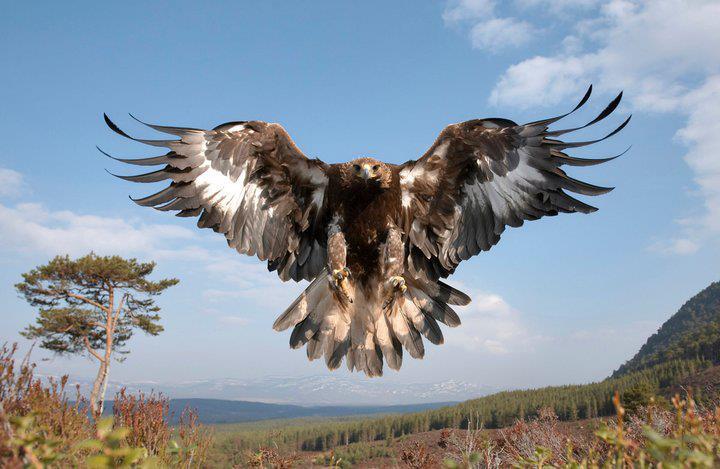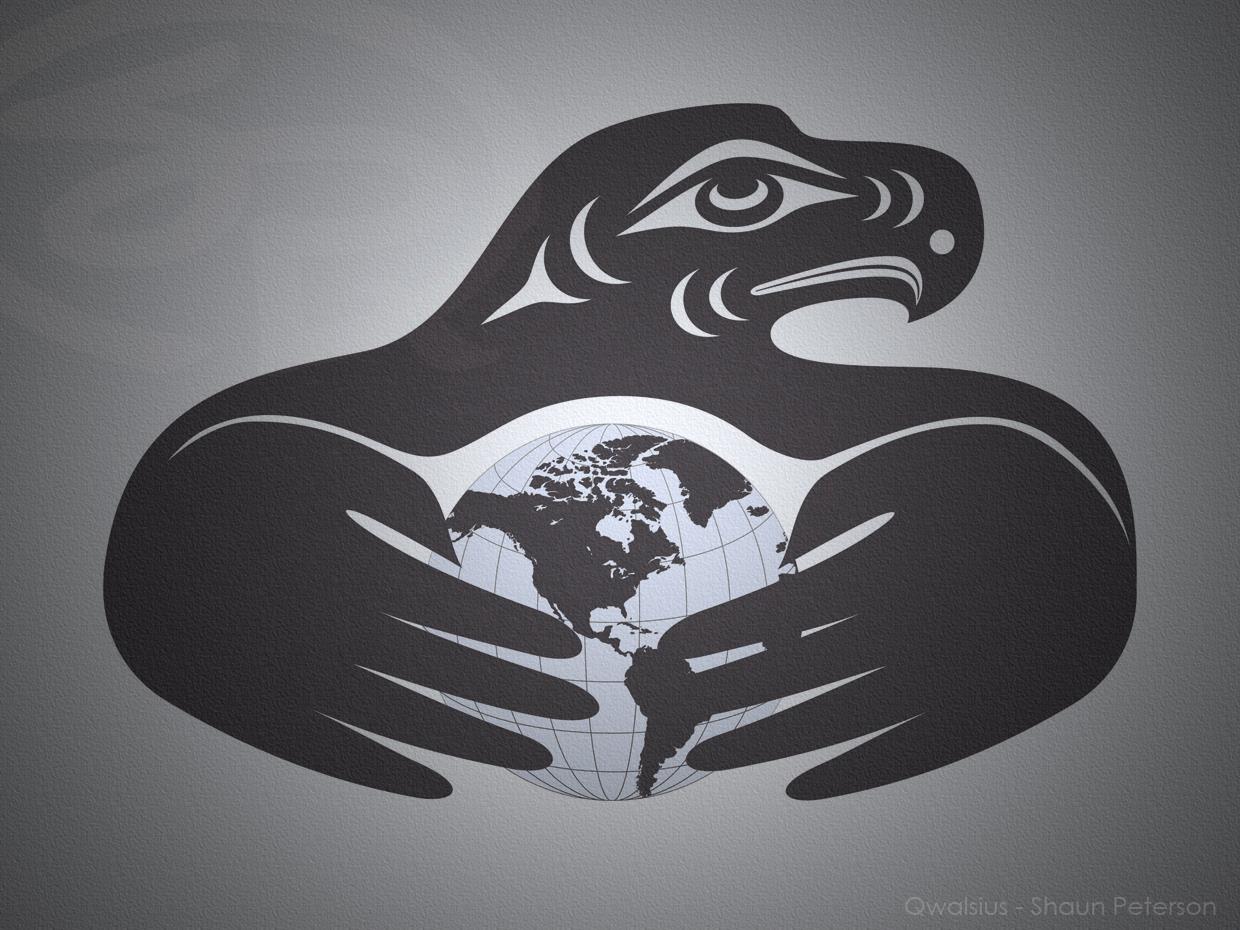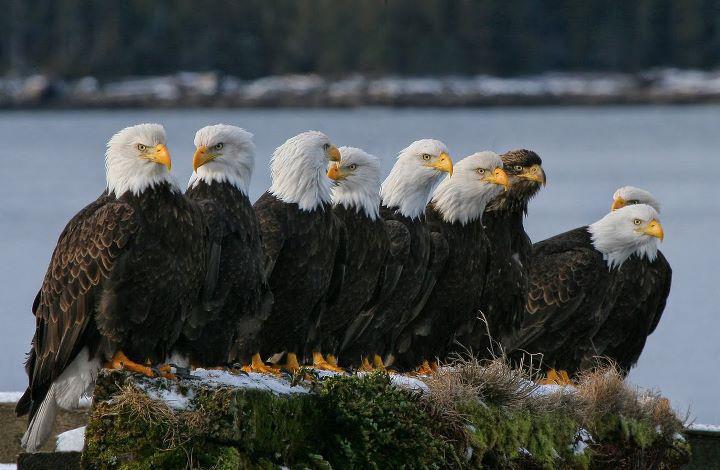
The Eagle Feather
When the world was new, the Creator made all the birds. He colored their feathers like a bouquet of flowers. The Creator then gave each a distinct song to sing. The Creator instructed the birds to greet each new day with a chorus of their songs. Of all the birds, our Creator chose the Eagle to be the leader. The Eagle flies the highest and sees the furthest of all creatures. The Eagle is a messenger to the Creator. During the Four Sacred Riguals we will wear an Eagle Feather in our hair. To wear or to hold the Eagle Feather causes our Creator to take immediate notice. With the Eagle Feather the Creator is honored in the highest.
by Randy Macey, Mohawk
~~~~~~~~~~~~~~~~~~~~~~~~~~~~~~~~
When one recieves an Eagle Feather that person is being acknowledged with gratitude, with love, and with ultimate respect. That feather must have sacred tobacco burnt for it. In this way the Eagle and the Creator are notified of the name of the new Eagle Feather Holder. The holder of the Eagle Feather must ensure that anything that changes the natural state of ones mind (Alcohol and Drugs) must never come in contact with the sacred Eagle Feather. The keeper of the feather will make a little home where the feather will be kept. The Eagle feather must be fed. You feed the Eagle Feather by holding or wearing the feather at sacred ceremonies. By doing this the Eagle Feather is recharged with sacred energy. Never abuse, never disrespect, and never contaminate your Eagle Feather. The Mohawk man will have three Eagle Feathers standing straight up on his Kahstowa (feather hat).
by Erik Phelps
~~~~~~~~~~~~~~~~~~~~~~~~~~~~~~~~
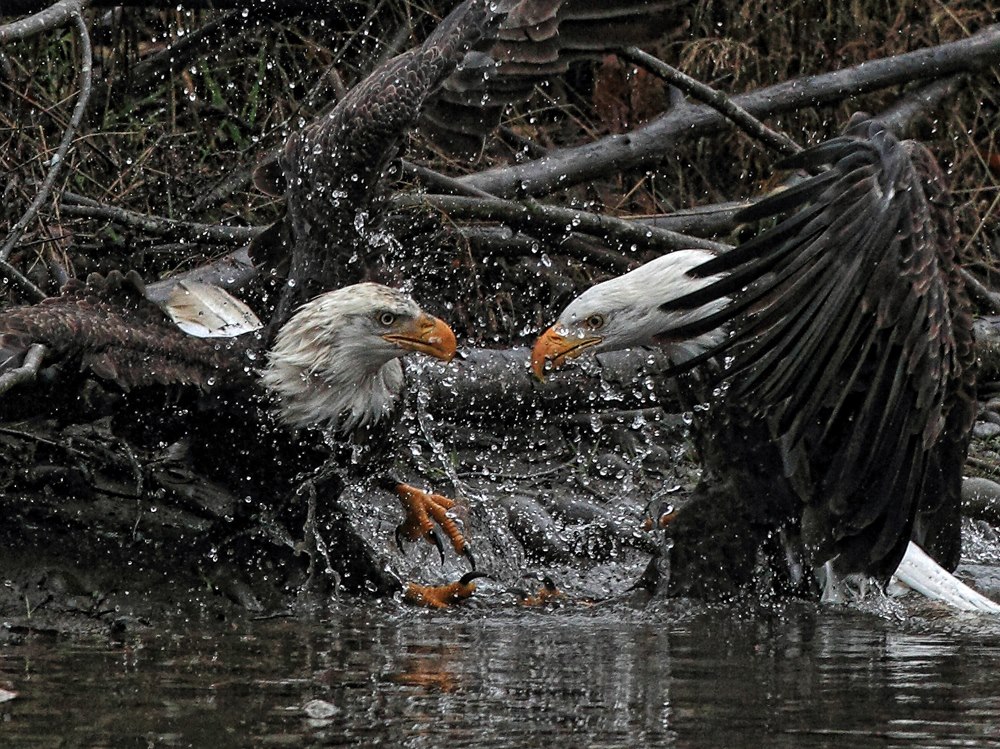 When the earth was created, a great thundercloud appeared on the horizon. Flashing lightning and thundering it's call, it descended toward the treetops. As the mists cleared, there was an eagle perched on the highest branches. He took flight and flew slowly down to the ground. As he approached the earth, he put forward his foot, and as he stepped upon the ground, he became a man.
When the earth was created, a great thundercloud appeared on the horizon. Flashing lightning and thundering it's call, it descended toward the treetops. As the mists cleared, there was an eagle perched on the highest branches. He took flight and flew slowly down to the ground. As he approached the earth, he put forward his foot, and as he stepped upon the ground, he became a man.
For this reason we recognize the eagle as a messenger of the creator, and rely upon him to carry word of our actions to God. When the eagle comes to where we are working, we know that God cares about us and is watching over us.
by D'Arcy Rheault
~~~~~~~~~~~~~~~~~~~~~~~~~~~~~~~~
Elder Michael Thrasher once told me that the eagle feather has two sides. If the feather had only one side then Eagle could not fly. On one side we find mind/intellect, body/movement and spirit/emotion. Once these are balanced a person is balanced. On the other side there is institution/education (and not just Western style education), process (the movement on one's path) and ceremony. Once these are balanced then a person's life is balanced. When the two sides of the feather are balanced then we have proper behaviour.
Funny thing is.......Eagle doesn't care if its feathers have two sides....It just opens its wings and flies up to Creator.
Miigwech
~~~~~~~~~~~~~~~~~~~~~~~~~~~~~~~~
~If EAGLE shows up, it means:
There's an opportunity for you that you're considering, and it would be best if you take advantage of it soon.
There will be a new beginning in a poitive direction following a recent period of strife, one in which you've gained a great deal of stamina and resilience.
It's time for a great spiritual awakening, one where you experience a greater connection to the Creator~
~~~~~~~~~~~~~~~~~~~~~~~~~~~~~~~~
~If EAGLE is your power animal:
You're a very spiritual person, a born leader, and people gravitate to you. You're willing to endure challenges and struggles because you're confident that you can meet them. Even though you are an old soul, you must still go through various iniations throughout your life that will lead you to living a completely directed life ♥
~Animal Spirit Guides~
~~~~~~~~~~~~~~~~~~~~~~~~~~~~~~~~
Athapaskan myths portrayed eagles as the deliverers of people from famine. A prince who gave an eagle a salmon during time of plenty was repaid in the lean year that followed by grateful eagles who first dragged salmon, then sea lions, and eventually whales to shore in gratitude for the prince's kindness. Such legends were probably inspired by the sight of eagle parents carrying food to their nests.
~~~~~~~~~~~~~~~~~~~~~~~~~~~~~~~~
A Kwakiutl legend has it that the eagle once had very poor eyesight. Because it could fly to the highest treetops, however; a chief asked the eagle to watch for invading canoes. Anxious to assist, the eagle convinced the slug, which in those days had excellent vision, to trade eyes temporarily.
The slug agreed, but when the eagle's sentinel duties were finished, the eagle refused to trade back eyes. Thus, goes the legend, not only is the eagle's sharp vision accounted for, but also the slowness of the slug.
The Navahos have a myth telling how eagles originated when a warrior, Nayenezgani, slayed a monster who lived at Wing Rock. Afterwards, he turned to the beast's offspring, who were now alone in their nest. Rather than have them grow up evil, he turned the youngest into an owl and the oldest into an eagle, who would be a source for feathers for rites and bones for whistles.
~~~~~~~~~~~~~~~~~~~~~~~~~~~~~~~~
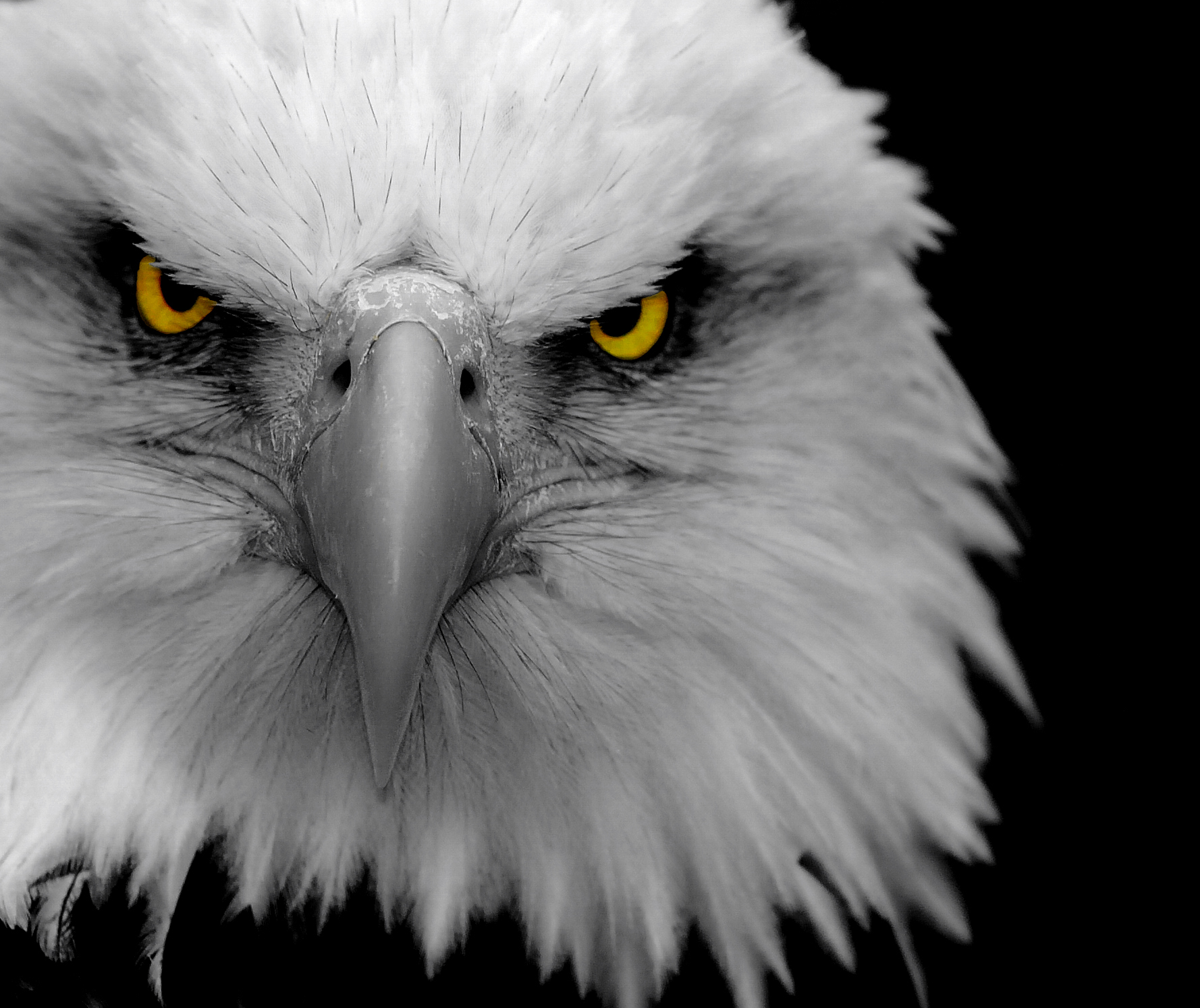 The Comanche's myth of eagle creation began when the young son of a chief died and was turned into the first eagle as an answer to his father's prayers. The Comanche eagle dance celebrates this legend.
The Comanche's myth of eagle creation began when the young son of a chief died and was turned into the first eagle as an answer to his father's prayers. The Comanche eagle dance celebrates this legend.
~~~~~~~~~~~~~~~~~~~~~~~~~~~~~~~~
The Pawnee believed the eagle to be a symbol of fertility because they build large nests high off the ground and valiantly protect their young. They honored the eagle with songs, chants, and dance.
~~~~~~~~~~~~~~~~~~~~~~~~~~~~~~~~
Aztecs and related tribes established in the valleys of Mexico, revered the eagle as a strong symbol, with feathers used by that society's elite.
~~~~~~~~~~~~~~~~~~~~~~~~~~~~~~~~
The eagle appears to have been regarded with extreme beneration by the Red Man of the north. Its feathers composed the war-flag of the Creeks, and its image carved in wood or its stuffed skin surmounted their council lodges. None but an approved warrior dared wear it among the Cherokees, and the Dakotas allowed such an honour only to him who had first touched the corpse of the common foe. The Natchez and other tribes esteemed it almost as a deity. The Zuni of New Mexico employed four of its feathers to represent the four winds when invoking the rain-god. Indeed, it was venerated by practically every tribe in North America. The owl, too was employed as a symbol of wisdom, and sometimes, as by the Algonquins, was represented as the attendant of the Lord of the Dead. The Creek medicine-men carried a stuffed owl-skin as the badge of their fraternity and a symbol of their wisdom, and the Cherokees placed one above the 'medicine' stone in their council lodge.
"Myths of the North American Indians", Lewis Spence.
Death of an Eagle
by Brookie Craig
~~~~~~~~~~~~~~~~~~~~~~~~~~~~~~~~
Eagles And Eagle Feathers
The Eagle (Migizi in Ojibway) holds a very special place for Native peoples. The Eagle soared so high in the heavens that Native peoples held it in high esteem since it was so much closer to the Creator. The Eagle became a power of vision, strength and courage. There are many special meanings and special uses for the Eagle.
Many Native teachings explain that Eagle is the Principle Messenger of Creator. Eagle flies the closest to Creator and, therefore, can see the past, present and future at a glance. Eagle sees the flow of change. Eagle alerts us to the changes so that we can respond appropriately. Eagle is the great illuminator and soars above us all, sometimes out of sight to us, but never out of its own sight. Eagle sees and hears all and sits in the east on the Medicine Wheel with the direction of leadership and courage.
In other words, Eagle is connected both to the spirit of Great Mystery and to the Earth and does both with ease. Eagle, therefore, is a powerful symbol of courage; that is why its feathers are such powerful tools for healing, and why there are special ceremonies for Eagle feathers. Eagle teaches us that it is okay to combine wisdom and courage — it is okay to be wise enough to know that a change needs to be made in one’s life and then finding the courage to execute the change.
A gift of an Eagle Feather is a great honor. It is a mark of distinction, one that could indicate that a rite of passage has been earned. The Eagle Feather represents the norms, responsibilities and behaviors that are all a part of the conditioning, learning and commitment to a spirit. It is in this way that life is honored and becomes whole.
The quill of an Eagle Feather represents stability, strength and foundation. In the Cycle of Life or wheel of life, it represents the spirituality of the people. This is where the beginning and ending meet. The quill represents the beginning and ending in the spiritual journey of life. Birth and death are represented here as rites of passage from and to the spiritual world. Conception, the nine month journey and childbirth are sacred and begin here. Traditionally, there were ceremonies or celebrations for the beginning of life.
The plume of an Eagle Feather or fluff is white, billowy and soft. It represents the purity, lightness and gentleness of a child full of the spirit and so new to the cycle of life. The plume is distinctive and usually a token of honor.
The plume in the Cycle of Life is the beginning of the formative years, childhood. It is the age of innocence, pride and dreams – a time for bonding and attachment to relationships, values, attitudes, behaviors, personalities, character and to the environment. It is a time for security and integration.
The vane of an Eagle Feather represents flexibility and adaptability with gentleness and firmness. The vane has a unique design as each feather is unique. Each individual is also unique. This is the expanded part of the feather just as youth are now expanding into the world and each is responsible for themselves.
In the Cycle of Life, the vane is the continuation of the formative years. The children have achieved their rights of passage, a boy becomes a hunter or warrior and a girl has reached womanhood. During this phase, there is learning and guidance. The mind, the mouth, heart and hand (avenues for the spirit) are being nurtured. Example and reinforcement are given in the proper direction to strengthen their spiritual well being and identity. It is a time of enrichment, logic and proof.
The entire feather is straight, strong, firm and gentle. The top portion represents the peak of life. The conduct of adulthood is to bring out the best in beauty and goodness. Men have achieved bravery, skill or character and have been renamed accordingly. Women have achieved a level of knowledge basic to the survival of the people. Self-discipline, survival skills, loyalty, solidarity, and respect within family are above all individual interests. The foundation laid for them is intact. Interdependence, empathy, insight and foresight enables them to be keepers and protectors of the culture. It is at this phase that marriage and child-bearing are foremost.
The opposite vane continues to represent flexibility and adaptability with gentleness and firmness. In the Cycle of Life, a level of seniority is established. Conduct of parenthood has been proven and movement into grand parenthood is inevitable. Relationships, community and nationhood are important. Responsibility for the welfare of others, young and old is the purpose of guidance. To encourage and support others is to give back what was given and to give more of one’s self.
As in the opposite, the plume of the Eagle Feather represents purity, lightness and gentleness. Purity in mind, body and spirit is achieved in old age. Elders become frail and weak like children. It is a very honorable age that speaks no arrogance or greed but the fulfillment of life to the best of one’s ability. They become the keepers of the wisdom with peaceful energy, authority and purpose. Elders are as highly esteemed as the Eagle.
Once again the quill represents the beginning and ending in the spiritual journey of life. Death is at the end of the Cycle of Life and is also a rite of passage into the spiritual world. The spirit lives on in the hearts and minds of loved ones into eternity. One has known his natural space, only once does he pass this way, he has made his journey. To honor death is to honor life as both are important in the spirit world.
~~~~~~~~~~~~~~~~~~~~~~~~~~~~~~~~
One First Nations story is also about the eagle feather:
In the beginning, the Great Spirit above gave to the animals and birds wisdom and knowledge and the power to talk to men. He sent these creatures to tell man that he showed himself through them. They would teach a chosen man sacred songs and dance, as well as much ritual and lore.
The creature most loved by the Great Spirit was the eagle, for he tells the story of life. The Eagle, as you know, has only two eggs, and all living things in the world are divided into two. Here is man and woman, male and female and this is true with animals, birds, trees, flowers and so on. All things have children of two kinds so that life may continue. Man has two eyes, two hands, two feet and he has a body and soul, substance and shadow.
Through his eyes, he sees pleasant and unpleasant scenes, through his nostrils he smells good and bad odors, with his ears he hears joyful news and words that make him sad. His mind is divided between good and evil. His right hand he may often use for evil, such as war or striking a person in anger. But his left hand, which is near his heart, is always full of kindness. His right foot may lead him in the wrong path, but his left foot always leads him the right way, and so it goes; he has daylight and darkness, summer and winter, peace and war, and life and death.
In order to remember this lesson of life, look to the great eagle, the favorite bird of the Great Spirit. The eagle feather is divided into two parts, part light, and part dark. This represents daylight and darkness, summer and winter, peace and war, and life and death. So that you may remember what I have told you, look well on the eagle, for his feathers, too, tell the story of life.
Look at the feathers I wear upon my hand, the one on the right is large and perfect and is decorated; this represents man. The one on my left is small and plain; this represents woman. The eagle feather is divided into two parts, dark and white. This represents daylight and darkness, summer and winter. For the white tells of summer, when all is bright and the dark represents the dark days of winter.
My children, remember what I tell you. For it is YOU who will choose the path in life you will follow — the good way, or the wrong way.
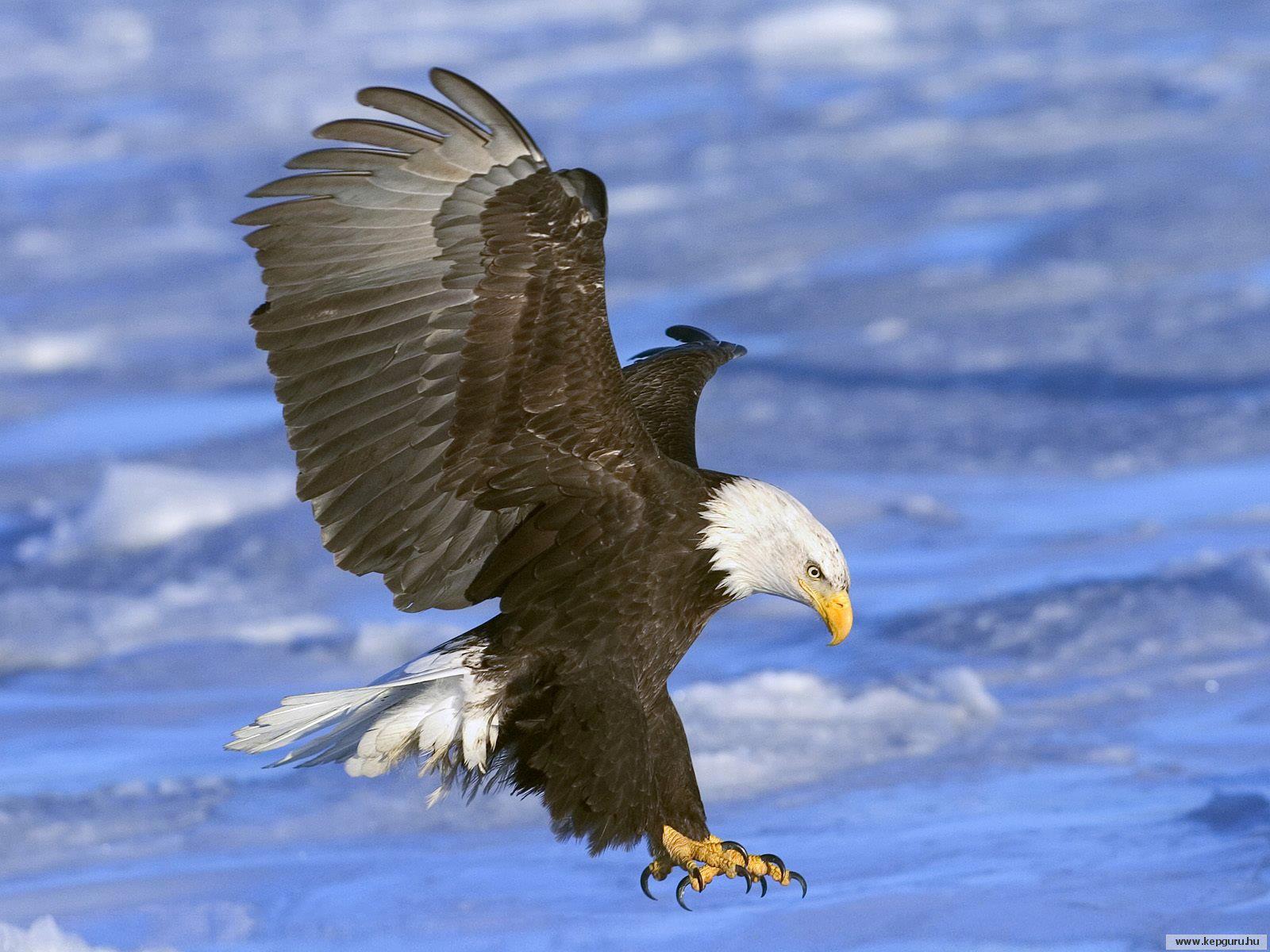
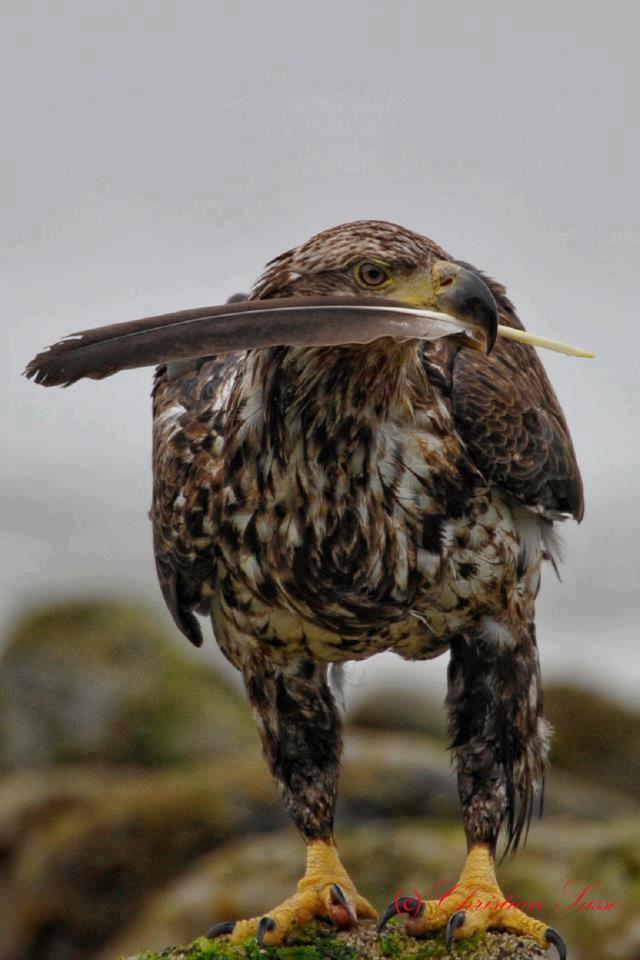
Source:
http://www.baldeagleinfo.com/eagle/eagle-myths.html
